

The 50 most recent images posted on aquarium-fish.info. Scroll down to see them all, or click on the image to see more about that species.
 Megalomphodus megalopterus Like most characins, Black Phantoms enjoy livefoods, such as frozen bloodworm. This picture highlights the differences between male (foreground) and female (background). Note the redder fins and body of the female, and the rounder belly. Also the significantly larger fins of the male |
 Paracheirodon axelrodi The effect of a large group of cardinals can be quite stunning in a moderately dark, well planted tank |
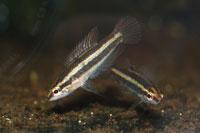 Trichopsis vittata The croaking gourami is a very small fish that prefers a dimly lit shaded aquarium, with significant planting |
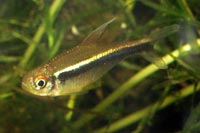 Hyphessobrycon herbertaxelrodi Like all tetras, this species needs to be kept as part of a shoal of at least 6-8 fish |
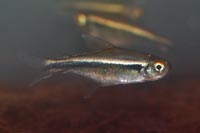 Hyphessobrycon herbertaxelrodi The Black Neon Tetra prefers a darker tank, with shading from floating plants and a dark substrate |
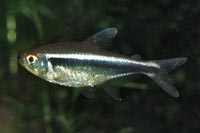 Hyphessobrycon herbertaxelrodi The colouration of the sexes is similar, however female fish are deeper bodied than the males |
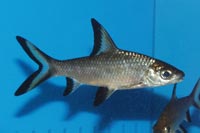 Balantiocheilos melanopterus The Silver Shark, is also known as the tricolor shark, shark minnow and Bala shark |
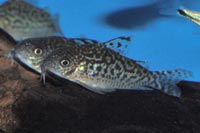 Corydoras sodalis C. sodalis is often confused with the Network Cory, C. reticulatus |
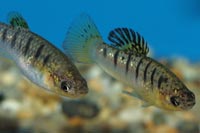 Limia nigrofasciata The male is noticeably smaller than female, but more intensely coloured |
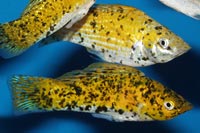 Poecilia sphenops The attractive glowlight marble molly is basically yellow, with a white belly, and varying degrees of black speckling |
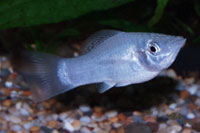 Poecilia sphenops Mollies exist in very many colour forms |
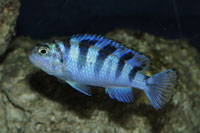 Pseudotropheus lombardoi Like all Malawi mbuna species, Pseudotropheus lombardoi makes it's home amongst rocks near the lakes shoreline |
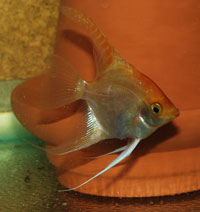 Pterophyllum scalare A Gold angelfish in front of a spawning cone; these act as a substrate on which discus and angelfish can spawn |
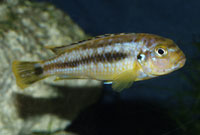 Melanochromis johanni Female Melanochromis johanni have a largely yellow body and fins, unlike males of the species which are entirely black/blue |
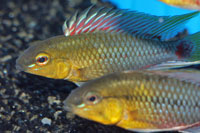 Apistogramma hongsloi Tank bred individuals are invariably more colourful than wild-caught specimens |
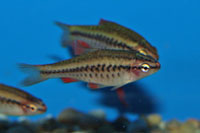 Puntius titteya Female cherry barbs do not have the bright colouration of the males, just a stripe... but they do still have red fins |
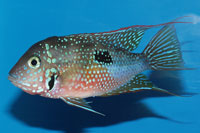 Thorichthys ellioti A colourful male |
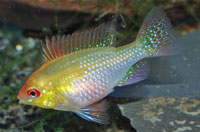 Papiliochromis ramirezi The golden strain of Papiliochromis ramirezi, the golden ram |
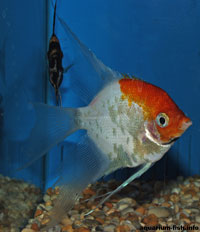 Pterophyllum scalare Angel fish cultivars are more widely available than the wild type fish. This is an "orange face" angel. |
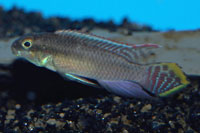 Pelvicachromis taeniatus A male from Lalonge |
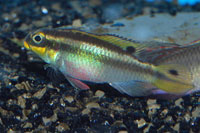 Pelvicachromis taeniatus Pelvicachromis taeniatus female, from Lobe, Cameroon |
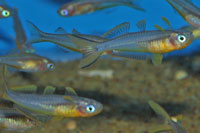 Pseudomugil furcatus A shoal of Forktail rainbows displaying with their fins |
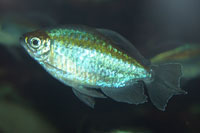 Phenocogrammus interuptus The Congo tetra is one of the larger tetras generally available for the aquarium |
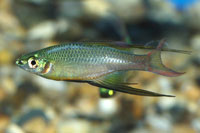 Iriatherina werneri The threadfin rainbow fish is a magnificent, but delicate species from slow moving waters in New Guinea |
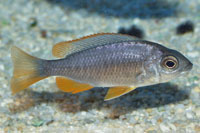 Copadichromis borleyi A female Copadichromis borleyi. from Kadango, Malawi |
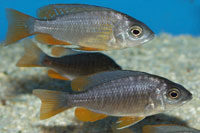 Copadichromis borleyi A young pair of Copadichromis borleyi. The male (top) will develop far more intense colours: a yellow/orange body with a blue head, whilst the female (below) can be almost black |
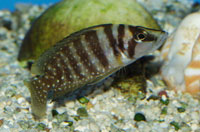 Altolamprologus calvus There are several colour variants of Altolamprologus calvus, ranging from almost white to almost black. All live amongst the rocks in the shoreline of Lake Tanganyika |
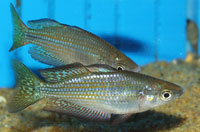 Melanotaenia papuae Two male Melanotaenia papuae |
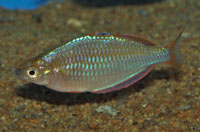 Melanotaenia praecox Melanotaenia praecox typically only reach an adult size of 8cm; smaller than many other rainbowfish |
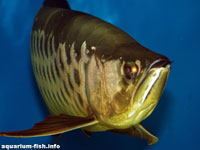 Scleropages formosus The arrowana is a large powerful fish with heavy scales as seen here |
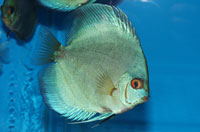 Symphysodon aequifasciatus Blue Diamond Discus are another cultivar, and a very attractive and popular one too |
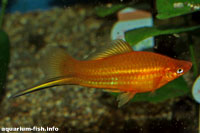 Xiphophorus helleri An attractive male swordtail |
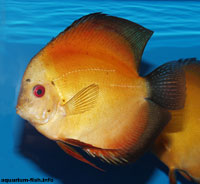 Symphysodon aequifasciatus The tangerine Discus. These Discus have been selectively bred for their bright orange colouration as the name suggests |
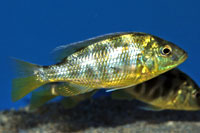 Nimbochromis venustus A younger Nimbochromis venustus without it's full adult colouration. The yellowish background and darker brown patches are what gives this fish its common name Giraffe cichlid |
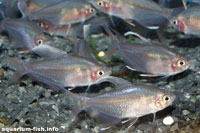 Hyphessobrycon bentosi Immature white-tipped tetras are less colourful than older ones; the reds especially intensify with age |
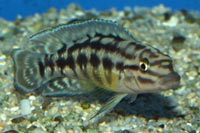 Julidochromis marlieri A male |
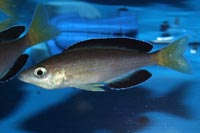 Cyprichromis leptosoma Species "Jumbo Kitumba" |
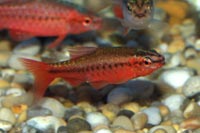 Puntius titteya This male cherry barb demonstrates the intensity of colour of some males |
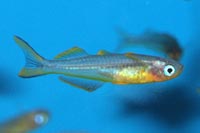 Pseudomugil furcatus Often referred to as the fork-tailed rainbowfish, or blue-eyed forktail |
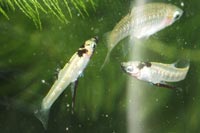 Girardinus metallicus Female metalic livebearers are considerably bigger than males. |
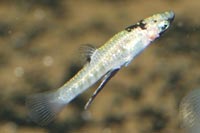 Girardinus metallicus A male metalic livebearer. |
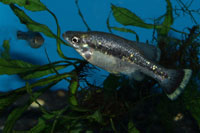 Ameca Splendens A male |
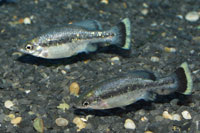 Ameca Splendens A male |
 Ameca Splendens A male |
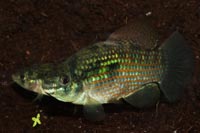 Jordanella floridae A pair; male foreground, female behind. |
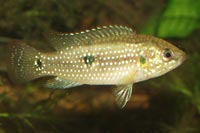 |
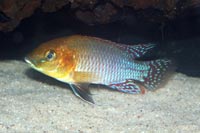 Pseudocrenilabrus nicholsi A colourful male. |
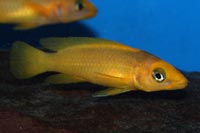 Neolamprologus leleupi A good varied diet is essential to keep this fish lookig its best |
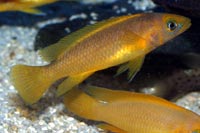 Neolamprologus leleupi The brilliantly coloured Lemon cichlid, Neolamprologus leleupi from Lake Tanganyika |
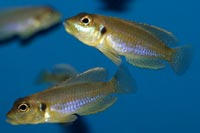 Lamprologus ocellatus Two splendid males |
more fish images here